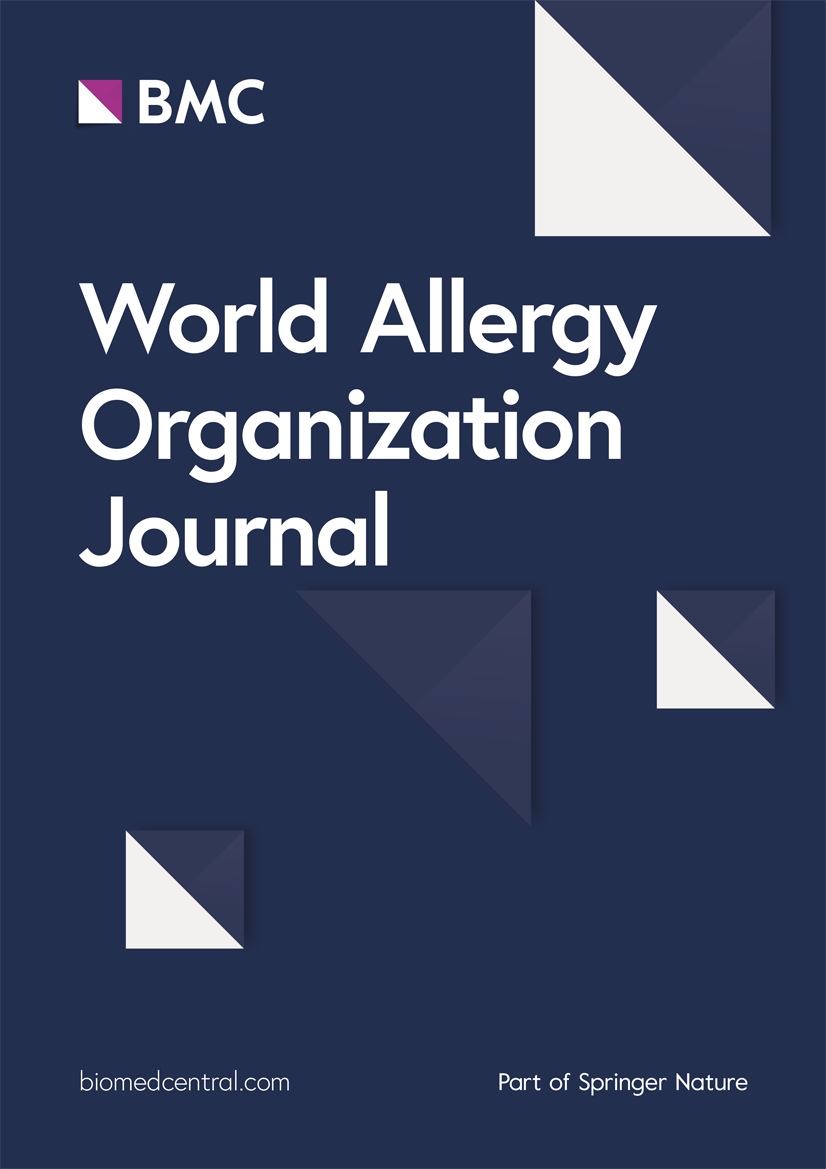日本成人过敏反应严重程度增高的危险因素/辅助因素:一项10年单中心回顾性队列研究
IF 4.3
2区 医学
Q2 ALLERGY
引用次数: 0
摘要
背景:过敏性休克是一种严重的危及生命的过敏反应。虽然过敏反应的危险因素/辅助因素因国家和地区而异,但在日本的情况下,这些因素的信息有限。因此,我们的目的是识别与日本成人过敏反应严重程度升高相关的危险因素/辅助因素。方法分析2010年1月至2020年6月在日本东京本院就诊的507例成人过敏反应患者。从患者病历中提取患者背景、临床特征和致敏原的数据。我们回顾性分析了与过敏反应严重程度增加相关的患者背景和临床特征信息。采用Logistic回归模型确定影响过敏反应严重程度的背景特征和临床特征。结果多因素分析显示,过敏反应发病时的年龄、吸烟史、哮喘和饮酒是导致过敏反应严重程度增加的重要危险因素。此外,药物性过敏反应的严重程度高于食物、异尖和其他过敏原。结论:我们成功地确定了导致日本成人过敏反应严重程度升高的危险因素/辅助因素。此外,我们的研究结果表明,饮酒和吸烟与成人过敏反应的严重程度有关。从本研究中获得的见解将有助于在临床实践中确定更有效的预防措施和治疗策略。本文章由计算机程序翻译,如有差异,请以英文原文为准。
Risk factors/cofactors for heightened anaphylaxis severity in Japanese adults: A 10-year single-center retrospective cohort study
Background
Anaphylaxis is a severe and life-threatening allergic reaction. Although the risk factors/cofactors for anaphylaxis vary between countries and regions, limited information is available on these factors within the Japanese context. Therefore, we aimed to discern risk factors/cofactors associated with heightened anaphylaxis severity in Japanese adults.
Methods
In total, 507 adult patients with anaphylaxis who visited our clinic (Tokyo, Japan) between January 2010 and June 2020 were included in the analysis. Data on patient backgrounds, clinical characteristics, and causative allergens were extracted from patients’ medical records. We retrospectively analyzed information on patient background and clinical characteristics associated with an increased severity of anaphylaxis. Logistic regression modeling was used to identify background features and clinical characteristics that contribute to anaphylaxis severity.
Results
Multivariate analysis revealed that age, smoking history, asthma, and alcohol consumption at the onset of anaphylaxis were significant risk factors contributing to the increased severity of anaphylaxis. Moreover, drug-induced anaphylaxis was associated with heightened severity than food, anisakis and other allergens.
Conclusion
We successfully identified risk factors/cofactors contributing to the heightened severity of anaphylaxis among adults in Japan. Additionally, our findings suggest that alcohol consumption and smoking are related to anaphylaxis severity in adults. The insights derived from this study will assist in identifying more effective preventive measures and treatment strategies in clinical practice.
求助全文
通过发布文献求助,成功后即可免费获取论文全文。
去求助
来源期刊

World Allergy Organization Journal
Immunology and Microbiology-Immunology
CiteScore
9.10
自引率
5.90%
发文量
91
审稿时长
9 weeks
期刊介绍:
The official pubication of the World Allergy Organization, the World Allergy Organization Journal (WAOjournal) publishes original mechanistic, translational, and clinical research on the topics of allergy, asthma, anaphylaxis, and clincial immunology, as well as reviews, guidelines, and position papers that contribute to the improvement of patient care. WAOjournal publishes research on the growth of allergy prevalence within the scope of single countries, country comparisons, and practical global issues and regulations, or threats to the allergy specialty. The Journal invites the submissions of all authors interested in publishing on current global problems in allergy, asthma, anaphylaxis, and immunology. Of particular interest are the immunological consequences of climate change and the subsequent systematic transformations in food habits and their consequences for the allergy/immunology discipline.
 求助内容:
求助内容: 应助结果提醒方式:
应助结果提醒方式:


